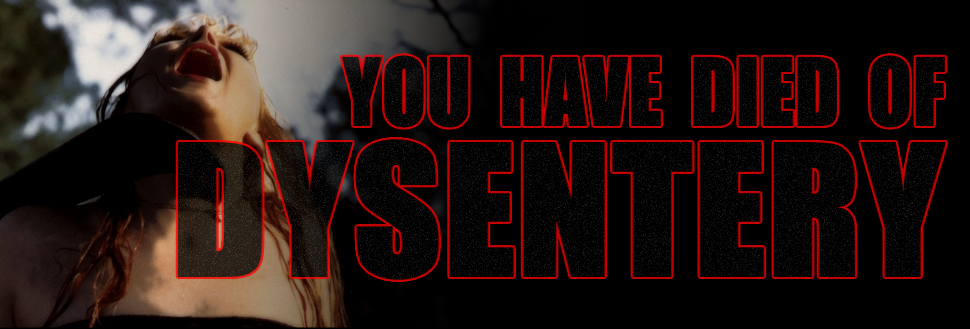Hey, who spilled
their SCANNERS all over my DANGER: DIABOLIK?
That's probably the
best way to describe ESPY, Toho's 1974 action-Eurospy-headfuck of a
film all about a group of ESP-wielding tough guys (and one gal) going
up against another group of ESP-wielding tough guys (and one gal).
The protagonists are part of an organized anti-crime unit known as
ESPY (get it? ESP(sp)Y) and the antagonists fly under the banner of,
what else?, Counter-ESPY. And what exactly do these naughty John and
Jean Greys want? Well, to kill off all the Muggles, of course. They
aim to achieve this by knocking off several European delegates before
an important UN peace treaty meeting can get under way. On the top of their
assassination list (for some reason) is the Prime Minister of
Baltonia, but the ESPY group soon steps in, led by the smooth and
cocky Tamura, and his love interest Maria. Also along for the ride is
Miki, a racecar driver with latent (and apparently quite potent)
psychic powers.
Getting into the
minutiae of the plot is probably unnecessary, if only because the
plot serves as nothing more than a set-piece dispenser for director
Jun Fukuda (director of some of the worst Godzilla films ever made,
including GODZILLA VS. GIGAN and GODZILLA VS. MEGALON, as well as one
of the best, GODZILLA VS. MECHAGODZILLA). We get the classic “trapped
in a car that's been rigged with explosives” moment along with
innumerable chase scenes, girl in peril scenes, shoot-outs and fist
fights, but here everything is augmented by the inclusion of psychic
powers and other metaphysical gobbledygook. ESPY officers (soldiers?
Peacekeepers?) can use telekinesis to throw people through the air,
jam up guns, correct the flight path of planes ready to crash into
mountains and rip out tongues (yes, those last two things happen in
this movie). They can use telepathy to communicate over great
distances, can hypnotize people in just a few seconds, and even, when
the plot calls for it, teleport through space and time.
The way Fukuda and
screenwriter Ei Ogawa (writer of the equally bizarre EPOCH OF MURDER
MADNESS) use these abilities within the film… well, they cheat a
whole lot. Abilities come and go whenever the tension needs a boost
and the science behind all this is just weird. Apparently, electrical
shocks can deplete your psychic energy and loud sonic reverberations
can interfere with your body-mind connection in the same way a
microwave can screw with your WiFi signal. Oh, and this psychic
energy is caused, in case you were curious, by love. No shit. It's
the power of love.
But it's difficult
to dwell on all the pseudo-scientific mumbo jumbo when the film keeps
throwing weird shit at you. Everyone in this movie carries guns that
shoot what I can only imagine are bullet-sized grenades. People flat
out explode into gooey bits constantly through this movie. And when
people are not being shot with grenade pistols, they're being set on
fire or taking ordinary bullets to the brain, chest, groin and legs. I was actually quite
taken aback by just how violent ESPY gets at times. These splattery
scenes are sharing space with a laid back, swinging 70s
Eurospy-inspired romp, complete with a score that could have very
easily been composed by Stelvio Cipriani. Even the lead villain is a
bizarre contradiction of tone and appearance. I don't know what the
hell they were thinking when they came up with this character, but he
looks like a constipated Donald Pleasence doing the world's worst
Charlie Chan impersonation. Everything about this character screams
“campy”, but the rhetoric that spews out of his mouth sounds
straight out of a 1930s Nazi rally. He looks like a buffoon while
sometimes sounding rather terrifying, emblematic of this films
inability to stick to one consistent tone.
But screw it. It's
fun. No joke, ESPY is a damn good time. In fact, I would go so far as
to say that it is easily one of my favorite Eurospy actioners, even
if its Japanese origins preclude it from being considered
Euro-anything. It looks great, the score is fantastic, the three
leads (Hiroshi Fujioka, Masao Kusakari and Kaoru Yumi) are good
looking with magnetic personalities and charm coming out their asses,
and the entire film breezes by with a wild, reckless abandon,
shredding logic, scientific rigor and torsos along the way. Toho
produced a lot of cheap and quick entertainment throughout the 1970s
and a lot of it has since faded into obscurity. ESPY is one of those
films that few people outside of the Toho Faithful have ever seen. That needs
to change. Because it's fun. I like it. I like it lots.



